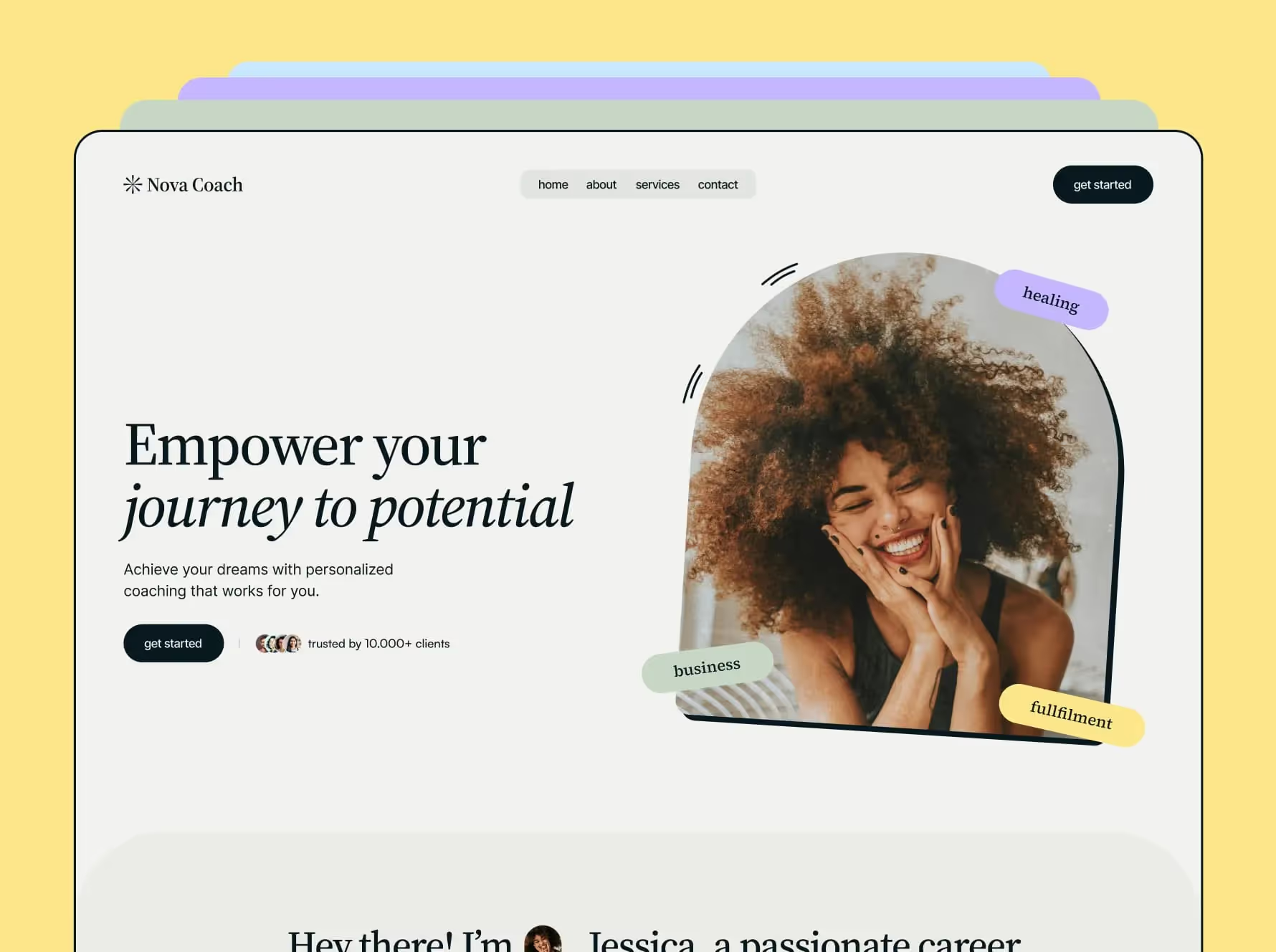Buying a Webflow template seems like a shortcut to a beautiful, functional website — and it can be. But here’s what most people don’t realize:
A template doesn’t mean instant launch.
Even with a premium template, there’s work involved in customizing, cleaning up, and branding it for your business. That means time, cost, and planning before you hit “publish.”
So before you buy, here’s what to look for — and what to expect.
1. Does the Overall Design Match Your Brand Direction?
Look beyond the pretty hero section.
Ask yourself:
- Do the fonts feel close to your style?
- Are the colors easy to swap for your palette?
- Does the layout style (modern, minimal, bold, corporate) align with your brand vision?
If the design feels too far off, you’ll spend more time (and money) tweaking than starting fresh.
2. How Many Pages Does It Include — and Do You Need Them All?
More pages aren’t always better.
Extra pages = more cleanup later (removing unused layouts, adjusting navigation, hiding drafts).
Choose a template that has the core pages you need most (Home, About, Services, Contact, Blog). The rest? Consider whether they’ll be useful or just extra clutter.
3. Check the CMS Setup (If It Has One)
If you need a blog or case studies, make sure the template advertises CMS collections.
Templates without CMS require more dev time later.
Look for:
- Blog or portfolio functionality listed in the description
- Mention of “dynamic content” or “CMS-powered” in the feature list
4. Does It Feel Modular and Flexible?
Preview the demo and scroll through sections:
- Are sections clearly separated and easy to rearrange?
- Do they look reusable for different pages?
A modular template makes customization faster. A rigid one locks you in.
5. Realistic Expectations: There’s Always Cleanup
Even with the best template, your developer (or our team) will do housekeeping first:
✔ Hiding or deleting unused pages
✔ Cleaning up unused classes
✔ Optimizing images for speed
✔ Adjusting responsive breakpoints
✔ Organizing CMS content
This step is unavoidable. Why? Templates are designed for broad use cases, not your exact business.
Time & Cost Tip:
Customizing a template can still save time vs. building from scratch — but budget for cleanup and branding work. It’s not plug-and-play.
6. Does the Template Creator Offer Support or Docs?
Even a great template has a learning curve. Look for templates that include:
- Documentation
- Video walkthroughs
- Email or forum support
This can save you hours down the road.
A template can speed up your build — but it’s not a magic bullet. The key is choosing a template that aligns closely with your brand and functionality needs, and planning for some customization work.
And if you’d rather skip the frustration, KHULA can help. We’ll reskin your template, clean it up, and make it feel like a custom site without starting from scratch.



